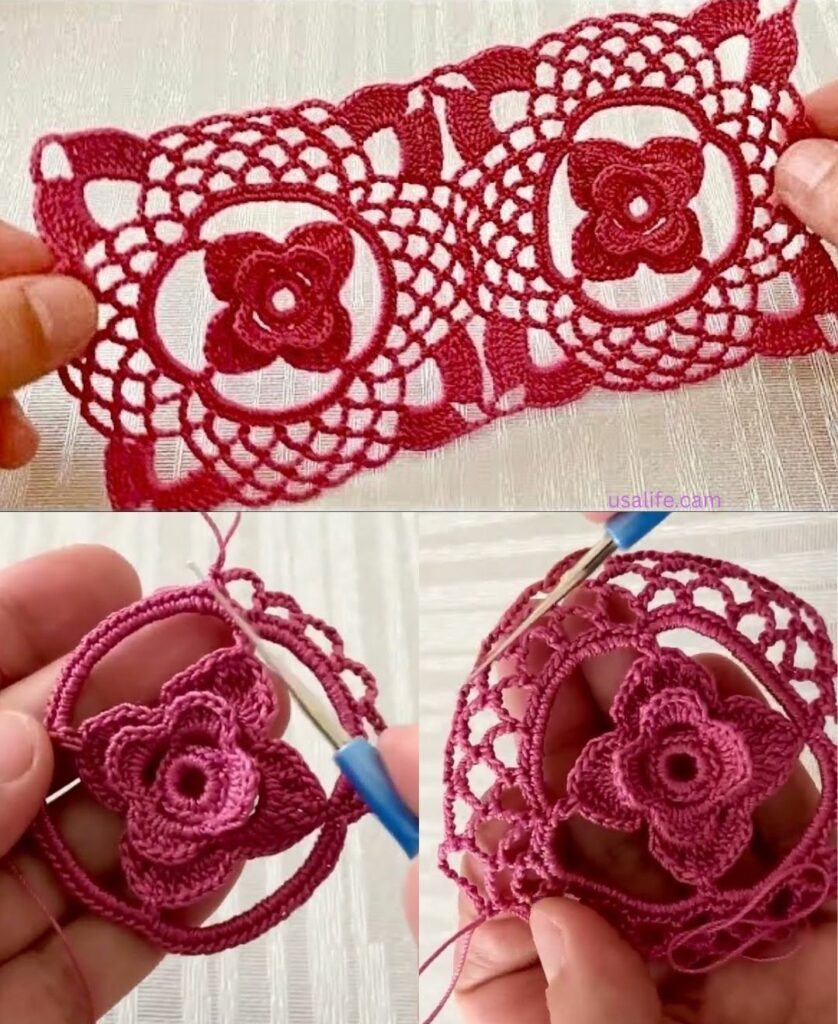That’s a fantastic request! Finding a versatile crochet pattern that can be adapted for accessories (shawl, runner) and garments (blouse, tunic) is key to maximizing your crocheting time.
I will detail the Granny Stripe Stitch, which is a highly popular, fast, and flexible pattern that works beautifully for all the items you’ve mentioned.

🧶 The Versatile Granny Stripe Stitch Pattern
The Granny Stripe stitch is based on the famous granny square clusters (3 DC stitches), but worked back and forth in rows. It creates a breathable, flexible fabric perfect for garments and drapes well, making it ideal for the latest comfortable, oversized styles.
Materials and Abbreviations
- Yarn: Choose yarn based on your project:
- Shawl/Blouse/Tunic: Lightweight, soft yarn (DK, Sport, or Fingering) for drape.
- Runner: Sturdier cotton yarn (Worsted or DK) for shape.
- Hook: Appropriate size for your yarn.
- V-Stitch (V-st): (dc, ch 1, dc) all worked into the same stitch or space.
| Abbreviation | Stitch Name |
| ch | Chain |
| sl st | Slip Stitch |
| sc | Single Crochet |
| dc | Double Crochet |
| sp | Space (refers to the space between clusters) |
Part 1: Basic Granny Stripe Panel (Core Pattern)
This is the standard pattern for a rectangular item like a runner or the back/front panel of a garment.
- Foundation Chain: Chain a multiple of 3 + 2. (e.g., ch 23, ch 32, etc.)
- Row 1 (Foundation):dc in the 4th ch from the hook (skipped chains count as 1 dc). dc in the next ch. [ch 1, skip 1 ch, dc in the next 2 chs]. Repeat the bracketed sequence across the row. You should end with 2 dc. ch 3 (counts as dc) and turn.
- Note: This foundation row is slightly structured to ensure a clean base.
- Row 2 (Granny Clusters): Work 3 dc into the first ch-1 space (sp). [ch 1, 3 dc into the next ch-1 sp]. Repeat across the row. End the row with 1 dc in the top of the turning chain from the previous row. ch 3 and turn.
- Row 3 (Mesh Gaps): Work 3 dc into the first ch-1 space (sp) from Row 2. [ch 1, 3 dc into the next ch-1 sp]. Repeat across the row. End the row with 1 dc in the top of the turning chain from the previous row. ch 3 and turn.
- Repeat Rows 2 and 3 for the desired length. (Note: Row 2 and Row 3 are essentially identical in terms of placement; you are always working the cluster into the ch-1 space of the previous row).

Part 2: Structural Adaptations
1. Table Runner (Rectangle)
- Construction: Follow the basic Granny Stripe Panel (Part 1). Start with a chain equal to the desired length (e.g., 60 inches) and repeat the rows until the desired width (e.g., 14 inches) is reached.
- Material: Use 100% cotton in DK or Worsted weight for a piece that lays flat and is easy to wash.
- Edge: Finish the perimeter with a round or two of single crochet (sc) for a crisp, clean edge.
2. Blouse & Tunic (Garments)
Garments require shaping for the neckline, armholes, and bust.
- Construction: Create two large Granny Stripe Panels (Front and Back) that match your chest width and tunic length.
- Seaming: Join the panels at the shoulders and sides using a slip stitch seam. Leave large openings for the neck and armholes.
- Sleeves/Tapering: To create sleeves, pick up stitches around the armhole and continue the Granny Stripe pattern in the round. To taper the sleeves, decrease by substituting a cluster (3 dc) with a (2 dc) cluster periodically.
- Neckline Shaping (Simple): Stop working rows in the center of the front panel, and work each shoulder strap separately for the last few rows.

3. Shawl (Triangle)
A triangle shawl increases steadily from the center point outwards.
- Start: ch 5. Sl st into the first ch to form a ring.
- Row 1: Ch 3 (counts as dc). Work (2 dc, ch 2, 3 dc) into the ring. Ch 3 and turn.
- Row 2 (Increase): Work (3 dc, ch 2, 3 dc) into the first turning chain space (increase corner). ch 1. Work (3 dc, ch 2, 3 dc) into the ch-2 corner space. Ch 3 and turn.
- Row 3 (Increase): Work (3 dc, ch 2, 3 dc) into the first turning chain space. ch 1. Work 3 dc into the ch-1 side space. ch 1. Work (3 dc, ch 2, 3 dc) into the ch-2 corner space. Ch 3 and turn.
- Continue: In every row, you will increase by one
(3 dc, ch 1)cluster on each side.

Would you like me to detail a different stitch pattern, perhaps one that uses more open lace?
Video tutorial:


